






Let Grow Takes a Look at Crime Statistics
Do you feel like your children are living in a far more dangerous time than you grew up in? In a world full of screaming headlines, that’s understandable. It sometimes feels no child is safe.
So — what are the actual statistics? Below we’ll get to the graphs, and what is happening with today’s crime rate. But first, let us address the top parental fear: Child kidnapping.
The Risk of Being Kidnapped by a Stranger?
The media like to report that “460,000 children go missing every year.” But that number does not represent “children who are kidnapped and given new names and enrolled in a new elementary school,” says University of Delaware Criminal Justice Prof. Joel Best.
Instead, that number comes from a 2017 report by the Department of Justice on missing children. To qualify – we realize that’s a strange word — a person UNDER AGE 18 just had to be missing for more than an hour.
The DOJ report used police data as well as results from a national survey that asked parents: Did your kids ever go missing? Yes, said some parents. For instance:
- An 8-year-old got off at the wrong bus stop and his frantic parents called the cops.
- A 10-year-old came home from the beach and went to bed – but her parents thought she was still outside.
- A divorced mom violated a court order by taking her 9-year-old out of state.
- A 17-year-old girl, pregnant, ran away.
So, of the 460,000 missing children — a scary number! — the report concluded (in a footnote), about 105 were “stereotypical kidnappings” – police-speak for abductions like you see on Law & Order. Most of those victims were teens. And 92% of them made it home safe.
Another, more recent DOJ study concluded that, “The data do not demonstrate any change in rates” from the earlier study.
Any crime against any child is heart-wrenching. Obviously! But the fact that almost all the minors kidnapped now make it home alive is good news about a terrible situation. And contrary to common perception, said David Finkelhor, head of the Crimes Against Children Research Center: While “the poster kids for stranger-danger have often been very young,” the most common age of victims is 12 to 17.
The odds of getting abducted by a stranger?
There are about 72 million kids 0-17 in America. And the number kidnapped by strangers is about 100. So the odds of being kidnapped are about 1 in 720,000 or closing in on 1 in a million.
You are five times more likely to have a co-joined twin.
To give us a little more perspective, Warwick Cairns, author of “How to Live Dangerously,” crunched the numbers and determined this:
If for some strange reason you WANTED your child to be kidnapped by a stranger, how long would you have to keep them outside, unattended, for this to be statistically likely to happen?
750,000 years.
This surprises almost everyone — and helps to put our fears into perspective.
So now, let’s move on to what’s happening with crime in general in America.
The Current U.S. Crime Rate
If the 2024 murder rate continues apace, murders will be LOWER than even BEFORE COVID.
“The frightening crime increase that began in 2020 is looking more and more like a passing phenomenon and not a continuing national disaster like the crime wave of the late 1960s through early 1990s.” (Source: Bloomberg)
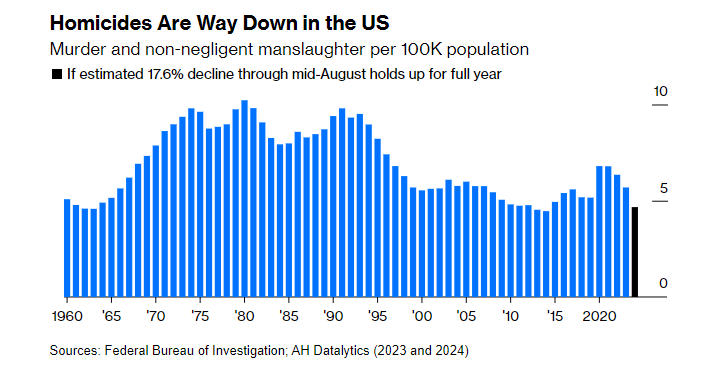
*Crime is lower today than in the ‘70s, ‘80s and ‘90s (source: NYTimes):
*Annual murder rate in the U.S.
This chart shows annual murders per 100,000 people in the U.S. from 1960 to 2023. The murder rate went down again in 2024. Today’s murder rate is on par with 1967’s. For up the minute crime data, visit the Real Time Crime Index. You can drill down and see the data on your own state and even some cities.

Violent-crime rate in 2023 was near its lowest level in more than 50 years, crime analyst Jeff Asher wrote for his newsletter. Source: NYTimes piece.
Big point: The murder rate today is actually lower today than it was in the ’90s — even with the crime increase of the COVID era.
Murder has declined substantially in the U.S. since the early 1990s, although increases occurred in 2005 and 2006, and again in 2015 and 2016. In 2021, the homicide rate for the cities studied was about half what it was for those cities 29 years ago (15 deaths per 100,000 residents in those cities versus 28 per 100,000 in 1993).
Even With the 2020-2021 Increase, Today’s Murder Rate is Lower Than in the ’70s, ’80s & ’90s
The New York Times reports that the murder rate rose 30% in 2020 and kept going up — though more slowly — in 2021. But then it came down. Even when it reached its recent peak a a few years ago, it was still lower than when many of today’s parents were kids, as this graph of FBI stats shows:
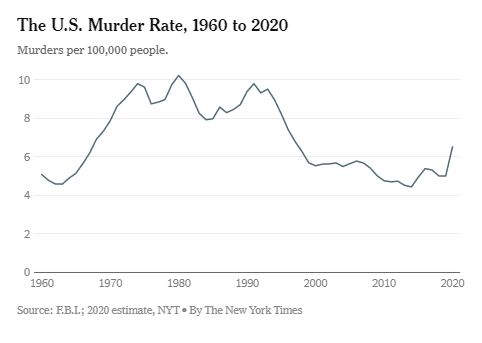
And the same goes for the entire category of violent crime: The recent increase is undeniable — but so is the decrease compared to the violent crime rates of the ’90s. This graph comes from CNN:
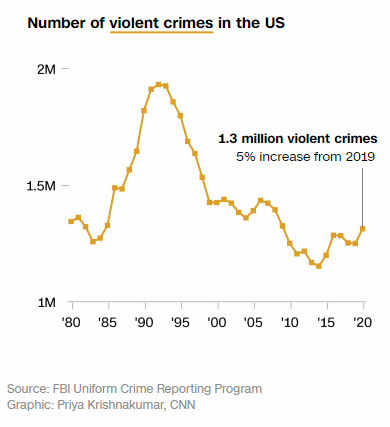
Here are some slightly older graphs that may provide some perspective — namely, that when crime has gone down for a while and then goes back up, that’s disturbing. But we are not back to the bad old days of a generation ago.
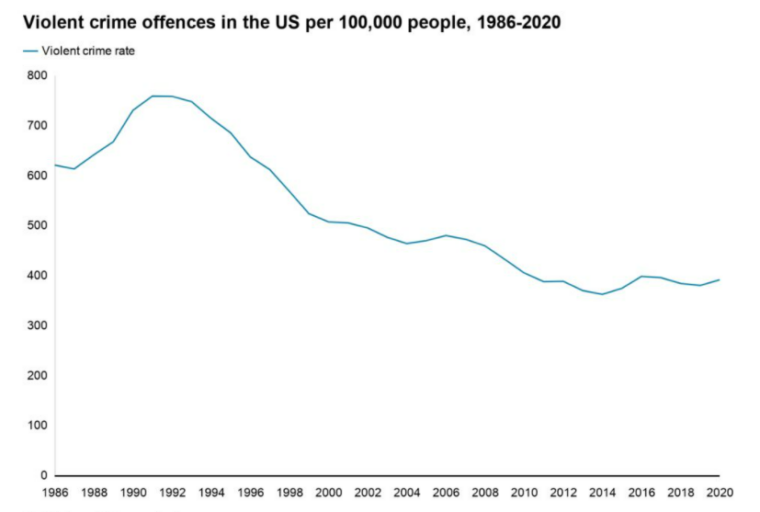
More Facts About Crime, Kids and Stranger-Danger
Table of Contents
Get the Facts: Crimes Against Children
The Truth About Stranger-Danger and Child Abduction
Additional Crime Statistics Resources
Get the Facts: Crimes Against Children
Viral Facebook posts would have you believe that human traffickers are lurking in every Walmart, predators stalk every playground, and schools are dangerous places to be. Take a look at some of the actual crime statistics involving children.
Human traffickers are not randomly abducting children.
The Polaris Project’s research indicates that human traffickers do not abduct victims (children or adults) randomly. Traffickers build relationships with vulnerable targets over time. (Polaris, 2018 Statistics From the National Human Trafficking Hotline)

Viral Facebook posts on sex trafficking abductions pop up regularly, but not a single one of them has been proven true. From Snopes.com:
Schools are much safer than we think.
Statistically, schools are actually among the safest places for children to be. It may feel as if shootings — at least before COVID — were far more common now than yesteryear. In fact, that is not the case.
This graph is from the National Center for Education Statistics:
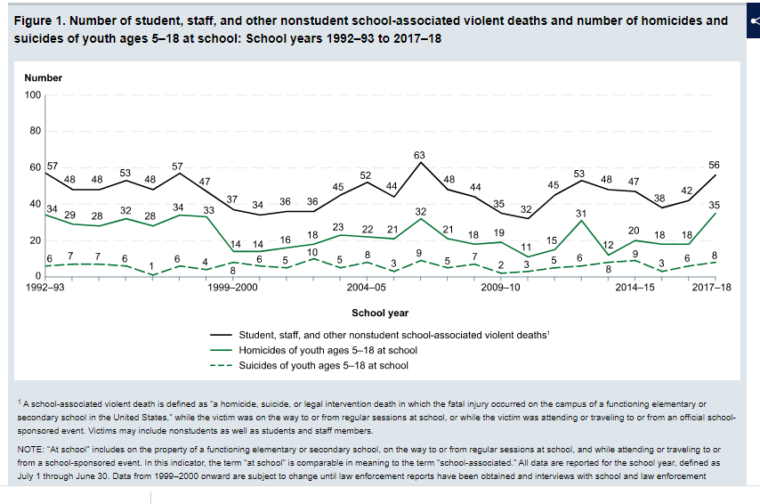
Here are some highlights from the federal report Indicators of School Crime and Safety: 2018.
Between July 1, 2015, and June 30, 2016, a total of 18 (1.2%) of the 1,478 homicides of school-age youth (ages 5–18) occurred at school.

Between 2001 and 2017, the overall percentage of students ages 12–18 who reported being victimized at school during the previous 6 months decreased from 6 to 2 percent. (Victimization is another way of saying someone has been the victim of a crime.)
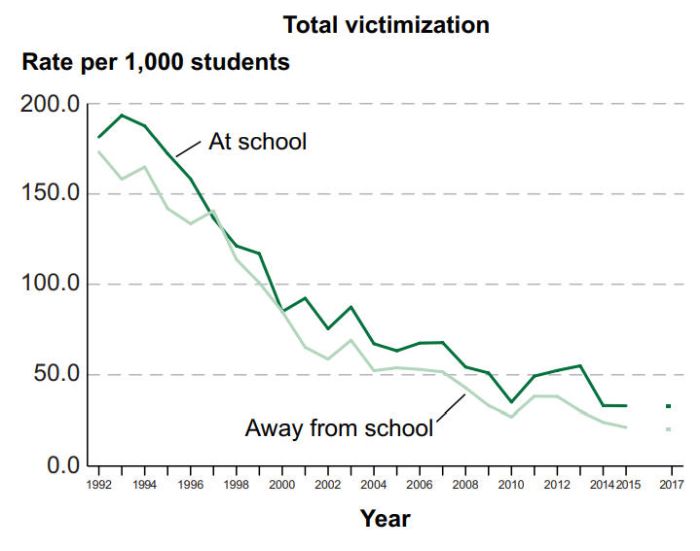
The percentage of students who reported gang presence at their schools dropped by more than half between 2001 and 2017.
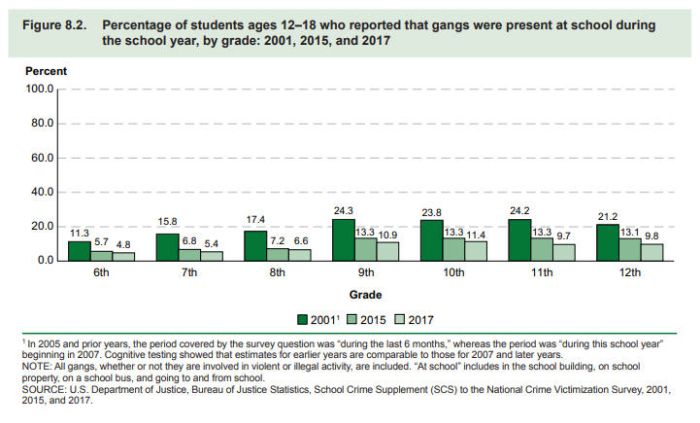
Sex offense registries aren’t making kids safer.
Experts often advise parents to monitor sex offense registries to look for dangers in their neighborhood. But those lists aren’t actually very effective at protecting kids or reducing crime. One reason is that 93% of sexual abuse of children is committed by someone the child already knows — not a stranger. (Sexual Assault of Young Children As Reported to Law Enforcement, Bureau of Justice Statistics)
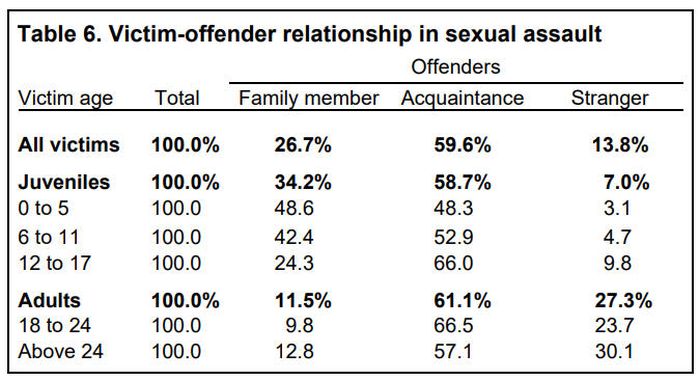
Additionally, only about 5% of sex crimes are committed by someone already on a registry. That means 95% of those crimes wouldn’t have been prevented by a registry anyway. (Does a Watched Pot Boil? A Time-Series Analysis of New York State’s Sex Offender Registration and Notification Law)
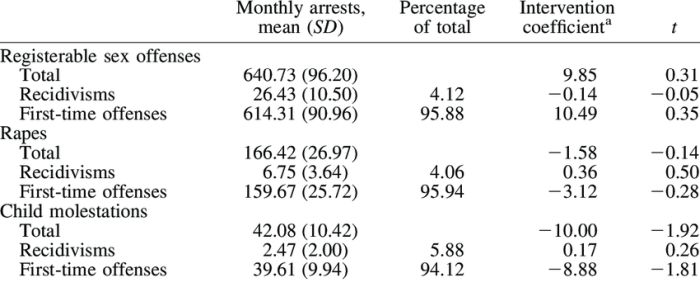
While many parents believe that anyone on the sex offender registry is dangerous, the recidivism rate of registrants is actually very low. One study found that after eight years on the registry, only 4% of offenders had new sex crime convictions. (Evaluating the Effectiveness of Sex Offender Registration and Notification Policies for Reducing Sexual Violence against Women, NCJRS)
The Truth About Stranger Danger and Child Abduction
Many parents worry about kidnapping, but the odds of a stranger randomly abducting a child are extremely small. According to the National Center for Missing and Exploited Children, non-family abductions are the rarest type of case and make up much less than 1% of the missing children cases reported to NCMEC.
A report by the Office of Juvenile Justice and Delinquency Prevention indicates that about 100 children are abducted by strangers each year. In 2019, stranger abductions made up about .3% of missing children cases. The vast majority of missing children are runaways.
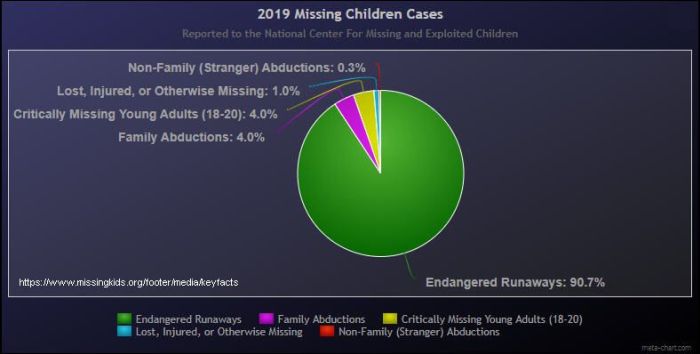
What’s more, the FBI National Crime Information Center reported a 40% drop in the number of missing children cases between 1997 and 2014. Possible reasons for this range from more police to more cell phones and cameras:
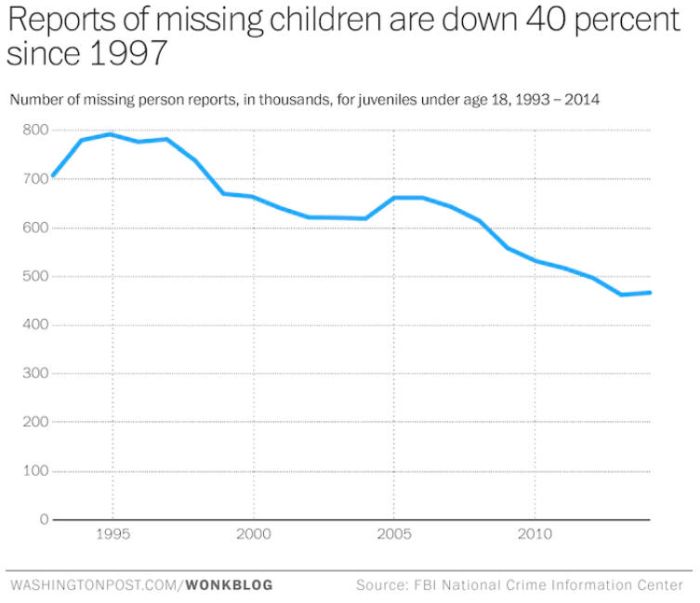
Child abusers of all types usually target children they already know. RAINN notes that only 7% of sexual abuse cases involve a stranger.
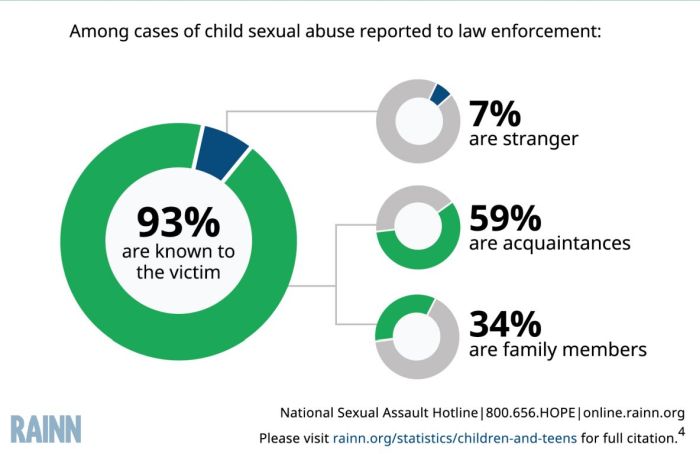
Stop teaching Stranger Danger.
“Stranger Danger” is an outdated concept, and sometimes even prevents kids from asking for help when they need it. By teaching kids that everyone they don’t know is dangerous, we make it impossible for them to know who they should trust. The National Center for Missing and Exploited Children no longer recommends teaching “Stranger Danger.”
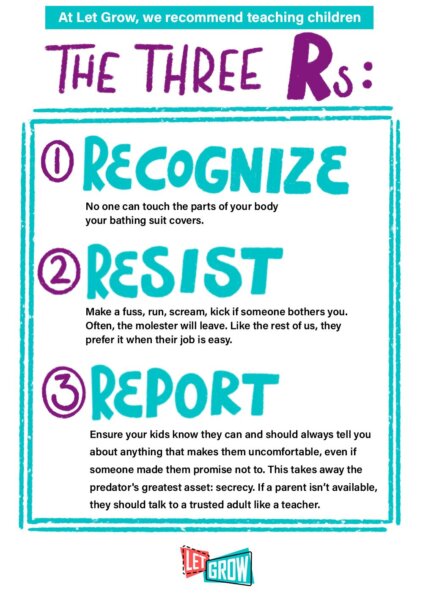
Additional Resources
There are a variety of terrific and reliable resources to help parents understand crime statistics and how they relate to kids. Here are some to consider.



Comments are closed for this article.